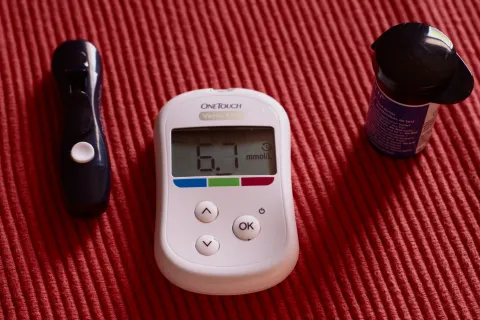Laxative safety: Miralax and autism
Q&A with GI-Autism Specialist Dr. Kent Williams
By Dr. Kent WilliamsIn response to a news report about an investigation into the safety of Miralax and other laxatives containing polyethylene glycol 3350 (PEG-3350), many of you wrote to us or posted questions on the Autism Speaks Facebook page.
In its news story, the New York Times quoted pediatric gastroenterologist and autism specialist Dr. Kent Williams as having concerns about PEG 3350’s safety when used long term, as is the case with many children who have autism and chronic constipation.
We asked Dr. Williams – who practices in the Autism Speaks Autism Treatment Network at Nationwide Children’s Hospital, in Columbus, Ohio – to provide answers and perspective in response to your concerns.
Our daughter’s pediatrician took us straight to daily Miralax for her chronic constipation. I feel like we need to start over, but I don’t know where to begin.
Thanks for your question. The safe and effective management of chronic constipation is an important and complex issue for many families with children affected by autism. As GI specialists within the Autism Speaks ATN, we’ve developed and provided the nation’s pediatricians with guidelines for safe and effective treatment of chronic constipation in children and teens with autism.
Autism constipation treatment
The good news is that we have various ways to treat constipation. The best course should reflect the causes and severity of a patient’s constipation.
So the first question is how severe was your daughter’s chronic constipation? For mild to moderate constipation, dietary and behavioral changes are often sufficient. Dietary changes include increasing dietary fiber and daily fluids, especially water and juice, to help soften stool and make it easier to pass. Behavioral changes include regular exercise and establishing good daily bowel habits. Working with a behavioral therapist can often help when trying to implement dietary and behavioral changes with children with autism.
However with severe constipation, we generally must go beyond dietary and behavioral changes. Dietary and behavioral treatments are important in these cases.
Medication is typically needed as well when a child has one or more of the following signs:
- Having two or less stools per week
- Having to strain or push hard to have a bowel movement
- Having hard stools
- Experiencing pain when passing stool
- Leaking liquid stool in addition to having constipation.
Miralax and autism Q&A:
Until recently, Miralax tended to be our first choice for treating severe constipation. Simply put, it was our most effective option. But now we’re seeing concerns raised about its use in young children.
With this information in hand, I hope you’ll feel comfortable going back to your child’s pediatrician and together review the approach you’ve been using to manage your child’s constipation.
Miralax was the ONE thing that relieved our son’s chronic constipation. Now what?
While we welcome the new investigation into safety concerns, I want to emphasize that any blanket rejection of using Miralax and other PEG-3350 laxatives might do more harm than good.
I say this because unresolved and severe constipation can have serious consequences. These consequences include severe pain, intestinal blockages and blood loss from rectal bleeding. Years of chronic constipation can lead to loss of intestinal function to the point that part of the colon may need to be surgically removed. In short, untreated chronic constipation can lead to serious and even life-threatening conditions.
As with any medication, we should weigh benefit and risk when placing someone on PEG laxatives. This is particularly true of young children. So I urge parents to discuss the following questions with their child’s physician:
Does my child need to be on a medication for constipation?
Unfortunately severe chronic constipation generally requires more than dietary and behavioral changes. And it’s undeniably common among children with autism. In addition, autism-related sensory and behavioral issues can make significant dietary and behavioral changes difficult.
Medical studies have shown that Miralax and its generic counterparts, when taken appropriately, are our most effective medications for relieving chronic constipation. I say “when taken appropriately” because many children with autism resist taking these laxatives due to oral sensory issues. In other words, they may have strong and emotional resistance to the way these products feel in the mouth.
And while we have concerns about the possible safety issues with Miralax, we must keep in mind that any medication has potential side effects.
Alternatives to Miralax:
- Lactulose. This is my first choice for mild to moderate constipation in children younger than 3 years old. It can likewise be effective in older children, but with age comes the increasing likelihood of painful gas production. This side effect results from lactulose being fermented by the intestinal “flora” (the intestine’s normal community of digestive bacteria), which tends to become more active with age. Lactulose may even result in unwanted changes to gut flora.
- Mineral oil. Mineral oil is safe and effective for mild to moderate constipation. However many children resist its use. Swallowing mineral oil can be a particular challenge for children with oral sensory issues. Also, it can cause a severe pneumonia if accidentally aspirated into the lungs.
- Magnesium laxatives (Milk of Magnesia, magnesium hydroxide, magnesium oxide, magnesium citrate). Again, many children with autism have difficulty with this laxative’s taste and consistency. We also worry about the effects of too much magnesium on skeletal and heart muscle.
- Colace (docusate sodium). Colace works by drawing water and fats into the stool. It’s considered safe, but isn’t as effective as Miralax. It simply doesn’t work for many of the children we see in our clinic.
In conclusion, Miralax remains the most-effective medication for many children with autism and severe, chronic constipation. So if you and your pediatrician have worked through other approaches without success, I would still strongly consider using Miralax based upon current safety information. At the same time, however, I strongly recommend that the family and physician work together to find the lowest effective dose. This is true with any stool softener or other type of laxative.
What about the toxic contaminants the FDA found in Miralax?
The FDA reported finding trace amounts of ethylene glycol and diethylene glycol in all eight batches of PEG-3350 laxatives that it tested. These chemicals might be byproducts from the manufacture or breakdown of PEG-3350. We know ethylene glycol and diethylene glycol are toxic in large amounts. However, the FDA allows trace amounts in medicines and even foods because small amounts aren’t harmful. Still, their presence raises concerns when a product is used long term.
If PEG-3350 stool softeners are the only products that work for your child, I recommend working with your doctor to minimize the potential for side effects by finding the smallest effective dose – in combination with the dietary and behavioral approaches described below.
Those are some scary behavioral side effects the FDA is investigating. Of course, I'm worried...
While abnormal behaviors and tics have been associated with use of PEG laxatives, this association may have more to do with severe chronic constipation itself than with the laxatives. Research has established a clear association between severe constipation and a variety of abnormal behaviors – particularly among children affected by autism. These include aggression, obsessive compulsions and attention deficit and hyperactive behaviors. This association with behavioral symptoms is among the reasons we take the comprehensive treatment of constipation so seriously in our autism clinics.
What about herbal laxatives like senna?
Many herbal supplements and teas can effectively treat occasional constipation. But there are concerns about using them daily over the long term.
These supplements and teas are made from a variety of herbs such as senna, rhubarb, aloe and frangula. Their laxative properties come primarily from compounds known as anthranoids. In the colon, anthranoids act as irritants, drawing in fluids and causing the colon to contract. They are legitimate alternatives to more-conventional medication. However they, too, are biologically active medicines. As such, they too can produce unwanted side effects. For example there’s some evidence – though not conclusive – that chronic use of anthranoid laxatives may increase risk for colon cancer.
If you choose to use herbal laxative teas, I recommend the following guidelines:
- Use only products from clearly identified and reputable companies with labels listing all ingredients.
- Follow the recommended dosing on the product labeling.
- Don’t rely on herbal laxatives for long-term treatment of constipation.
I hope these answers prove helpful in your discussions with your healthcare practitioner. Thanks again for your questions.
Related resources:
- Autism Speaks Invests $2.3 Million in Research on Gut-Brain Connection
- Autism Speaks ATN/AIR-P Guide for Managing Constipation in Children
DISCLAIMER: The above information is not meant to diagnose or treat and should not take the place of personal consultation, as appropriate, with a qualified healthcare professional.









